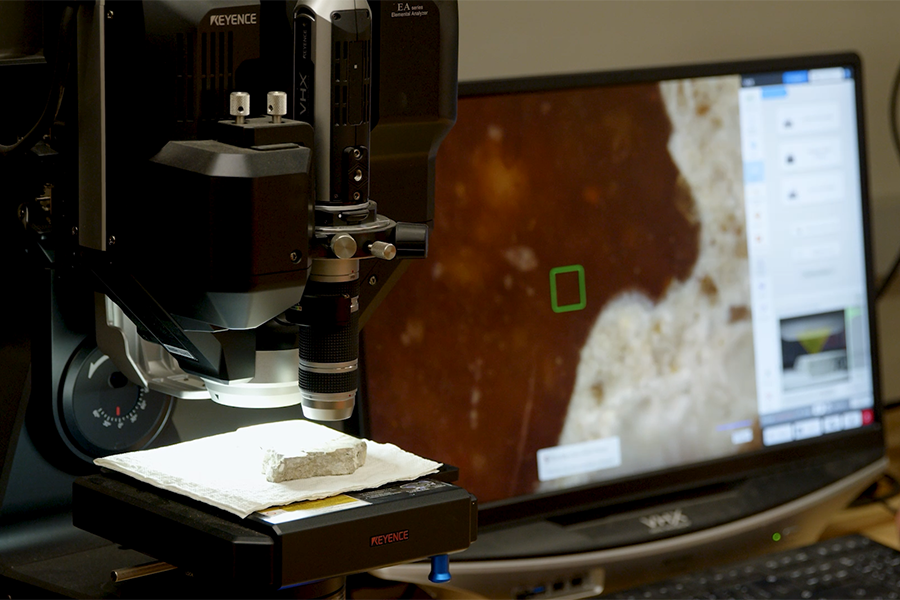
5/20/25
By Cynthia Vaquera
When we drive on Texas roads, the last thing we think about is what our tires are rolling on. But behind every mile of every road, science is at work. At the TxDOT’s Materials and Tests division lab, even the smallest detail is studied to get you safely to your destination.
A team of experts analyzes every crack, every concrete mix and every microscopic particle they receive from all over the state to check if they meet safety standards. This testing is known as petrographic analysis.
“Petrographic analysis is essentially the use of microscopy, mineralogy, geology, and chemistry to look at different failures in the roads and do forensic analysis,” said Maria Hruska, technical project manager at TxDOT’s Petrographic Lab.
This lab uses advanced technology to study the materials that make up our roads, such as the scanning of electron microscopes.
“They are extremely useful in doing very, very fine, detailed work and helping us see stuff that even normal microscopes wouldn't be able to see,” said Hruska.
This equipment studies the road in depth almost as if it were a medical exam, using technology that is also used in hospitals, to detect any damage that is invisible to the human eye.
“Something that starts off really small, once it starts spreading it can cause some really large scale cracking. And it's actually known as concrete cancer,” said Hruska.
In one of the most recent cases, the lab was sent samples of concrete that was failing strength tests. At first glance, it seemed like nothing was wrong with it, but the analysis revealed a surprise.
“We found out that actually air had been mixed into that concrete, so much that it weakened it by about 30%. And that concrete actually had to be removed,” Hruska said.
In addition to advanced microscopes, the team also uses technology used in space, known as Laser Induced Blast Spectroscopy (LIBS) scope.
“It's actually the technology that's used on the Mars rover. A laser will essentially hit the surface and do an elemental analysis,” Hruska said.
Beyond the technology, the team adapts each analysis to the unique climate conditions of every corner of Texas. But despite all this advanced technology and effort, safety on the road is up to all of us.
“We put so much time and energy and effort into making sure these roadways as safe as possible, but at the end of the day, you still have to drive like a Texan: kind, courteous and safe,” Hruska said.
TxDOT works hard to improve safety in every nook and cranny on Texas roads, but it takes a team effort of engineers, law enforcement and drivers working together to save lives and prevent crashes.